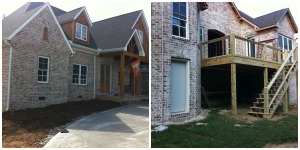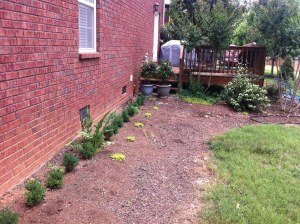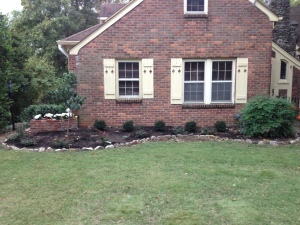After vision (Step 1) and budget (Step 2), the fun begins with garden design. There are three ways to approach design.
Quick Approach
Take pictures of your landscape. Measure the lengths of the outside walls. Find landscapes you like. Copy them.
This can be a small area or your entire landscape.
There is no wrong answer, design is subjective, just like visual arts. Some people will love your design, others will hate it. To please the most people, especially if you’re planning to resell your home one day, landscape the foundation with evergreen shrubs.
If you’re designing your first home’s landscape, start small, find plants that you like, and use them in many places. I like two-three varieties around the home’s foundation. Next I like blooming shrubs and small deciduous trees in front or nearby the shrubs. Finally, in front of your shrubs (around the foundation), plant annuals and perennials. Evergreen green provides a great backdrop to see flower colors.
Check out this blog post on timeless landscape design.
Pro Approach – Avoid the 3 Common, Expensive Design Mistakes
1. Do not install large growing trees and shrubs near the home foundation. Don’t do it. Plant large growing trees at least 15 ft from the foundation. Tree roots can crack the home’s foundation along with the danger of tree branches falling and damaging the roof.
Small stature trees like serviceberry, crapemyrtle, and dogwood are acceptable for foundation planting with some pruning required.
2. A controversial design decision I disagree with; (I see this approach all the time) planting one of everything. New gardeners and novice landscapers rotate one variety then another, and another. Choose one evergreen shrub variety per foundation wall to create uniformity. Uniformity is a design principle and is pleasing to the eye.
Choose a few varieties of trees/shrubs and replicate them throughout the design. Does this sound boring to you? Great design is simple. Seeing the same plants through out a landscape is pleasing to the eye.
3. When I look at a landscape I can tell if it was professionally designed or not. How? Plants in the wrong places. Simple common mistake. What do I mean in the wrong places? All plants thrive in different locations. Using a landscape designer, you get an unfair advantage because you don’t have trial and error. Designers know what does best.
Too many plants planted together? Probably done by a landscaper where they get paid for more plants. More plants sold and installed. More they make. This is an ethical conflict of interest. The best landscapers will coach you on spacing plants correctly, limiting the number of plants needed.
BONUS MISTAKE to AVOID: Only rookies use too many colors! Need help choosing colors? Click here
Pay a Professional Approach
I know, shameless plug. I offer landscape and garden design services. Basically I help you achieve the look you’re after. I help you pick the right plants for the right places. Contact me if you have a design question. Always happy to help!
Have you created a basic design? Now it’s time to purchase some plants in Step 4.







